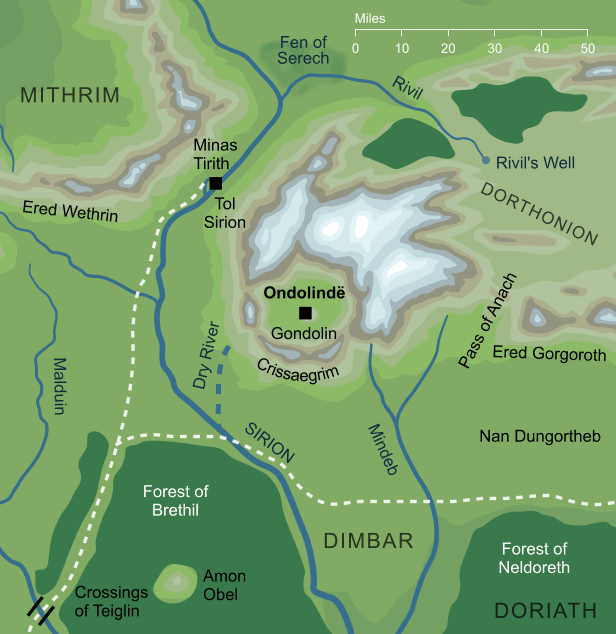- Cities and buildings
- Fields, plains and deserts
- Forests
- Hills and mountains
- Islands and promontories
- Lands, realms and regions
- Rivers and lakes
- Seas and oceans


 |
||||
|


Which personality type are you?
Take the Free mydiscprofile Personality Test to discover your core personality and your ideal job.   Which personality type are you? |
|
Dates
Location
Origins
Race
Divisions
Culture
Family
Ruled by Turgon of the House of Fingolfin
Important peaks
Surrounded and concealed by the Encircling Mountains of the Echoriath; the city was raised on the hill of Amon Gwareth
Passes
The only entry to the city was via the old Dry River that led to the guarded pass of the Orfalch Echor
Pronunciation
ondo'lindeh
Meaning
Other names
Indexes: About this entry:
|
Ondolindë‘Rock of the Music of Water’
Turgon son of Fingolfin was guided to the hidden vale of Tumladen by the Vala Ulmo, and there he found a green plain with an island of rock rising from its centre. That hill, Amon Gwareth, had many springs on its rocky sides, from which streams ran down in a music of flowing water. On this hill of fountains Turgon set about building a new city, concealed from all by the fence of the Encircling Mountains. This great work took more than fifty years to complete, but at last Turgon brought his people in secret from Nevrast, the land where they had been dwelling, into the new city. Turgon was one of the Noldor who had pursued Morgoth back into Middle-earth from Valinor, and he chose a name for his new city in Quenya, the language of the Elves in the Undying Lands. From the many fountains on the rock of Amon Gwareth, he chose the name Ondolindë, the 'Rock of the Music of Water'. In Beleriand, however, the Sindarin or Grey-elven tongue was spoken far more widely than Quenya, and in that language the sounds of city's name took on a new meaning. In Sindarin, the name could be heard as Gondolin, meaning 'Hidden Rock'.1 Though not apparently intended by Turgon, that name was well suited to the concealed city, and it is as Gondolin that the city's name was almost universally recorded in the histories of the First Age. Ondonlindë was not the city's only name, and in fact there were famously Seven Names of Gondolin, though for the purposes of this count of Seven, Ondolindë and Gondolin are treated as variations on a single name. The other six names of the city are recorded as Gar Thurion, Gondobar, Gondothlimbar, Gwarestrin, Loth and Lothengriol. Notes
See also...Gondolin, Hidden Rock, Rock of the Music of Water, Seven Names of Gondolin Indexes: About this entry:
For acknowledgements and references, see the Disclaimer & Bibliography page. Original content © copyright Mark Fisher 1999, 2001, 2011, 2016, 2023. All rights reserved. For conditions of reuse, see the Site FAQ. Website services kindly sponsored by myDISCprofile, the free online personality test.Take the FREE myDISCprofile personality test to discover your core personality and your ideal job. |